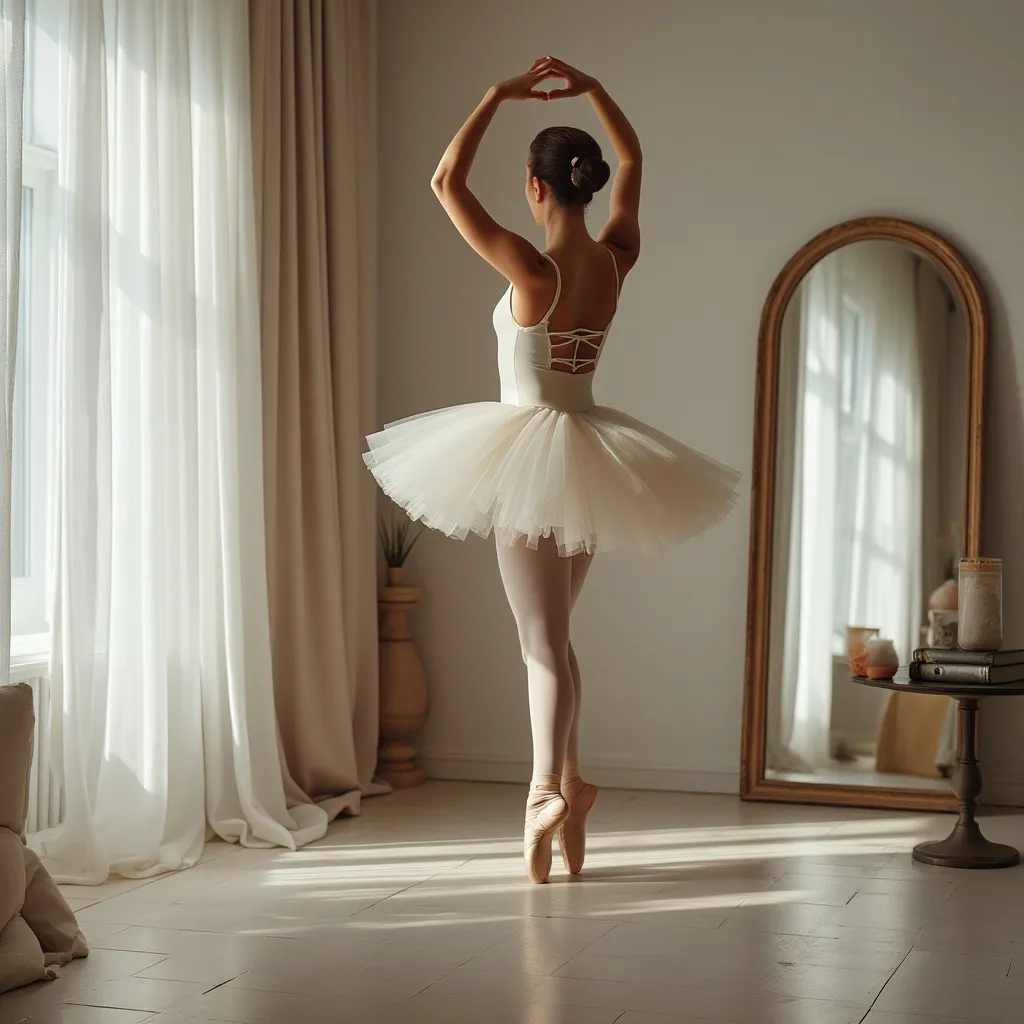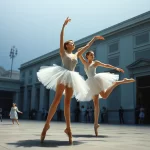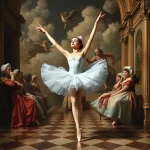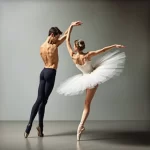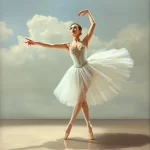The Role of Ballet in Political Propaganda: A Historical Perspective

Introduction
Ballet, an art form characterized by its grace, precision, and expressive movement, has long been celebrated for its aesthetic and cultural contributions. However, beyond its artistic value, ballet has also played a significant role in political propaganda throughout history. From the courts of Louis XIV to the Soviet Union’s cultural diplomacy, ballet has been utilized as a tool to convey political messages, assert national identity, and influence public opinion. This article delves into the historical perspective of ballet’s role in political propaganda, examining key periods and events where this art form intersected with political agendas.
The Origins of Ballet and Its Early Political Uses
The Court of Louis XIV
The origins of ballet can be traced back to the Italian Renaissance courts, but it was in France, under the reign of Louis XIV, that ballet began to take on a distinctly political dimension. Known as the “Sun King,” Louis XIV used ballet as a means to display his absolute power and control over the nobility. The king himself was an accomplished dancer and often performed in ballets that glorified his reign and reinforced the hierarchical structure of the court.
One of the most notable examples is the Ballet de la Nuit (1653), in which Louis XIV portrayed the Sun, symbolizing his central role in the universe. By participating in and patronizing ballet, Louis XIV not only showcased his personal talents but also used the art form to project an image of divine right and unchallenged authority.
Ballet as a Diplomatic Tool
During the 17th and 18th centuries, ballet also served as a diplomatic tool in European courts. Royal ballets were often staged during state visits and important political events to impress foreign dignitaries and convey messages of power and sophistication. These performances were meticulously crafted to reflect the political alliances and rivalries of the time, making ballet an essential component of courtly diplomacy.
Ballet in the Soviet Union: A Cultural Weapon
The Bolshevik Revolution and Ballet
The Bolshevik Revolution of 1917 brought significant changes to Russian society, including the arts. Initially, the new Soviet regime viewed ballet with suspicion, associating it with the aristocratic past. However, as the Soviet Union sought to establish its cultural identity and project its ideology both domestically and internationally, ballet was repurposed as a tool of political propaganda.
The Rise of Soviet Ballet
Under the leadership of Joseph Stalin, ballet became a key element of Soviet cultural policy. The state heavily invested in ballet companies, schools, and theaters, promoting it as a symbol of Soviet cultural superiority. Ballets were created to reflect socialist themes, glorify the working class, and celebrate Soviet achievements. Works such as “The Red Poppy” (1927) and “Spartacus” (1956) exemplified this trend, using the medium of ballet to convey revolutionary ideals and historical narratives aligned with Soviet ideology.
Cultural Diplomacy and the Cold War
During the Cold War, ballet became a significant instrument of cultural diplomacy for the Soviet Union. The Bolshoi and Kirov (now Mariinsky) Ballet companies toured extensively, showcasing Soviet cultural prowess to the world. These tours were not merely artistic endeavors but strategic efforts to win hearts and minds in the ideological battle between East and West. The success of Soviet ballet on the international stage was used to demonstrate the supposed superiority of the socialist system and to counter Western cultural influence.
Ballet in Nazi Germany: Propaganda and Control
The Nazi Regime and the Arts
In Nazi Germany, the arts were tightly controlled and manipulated to serve the regime’s propaganda goals. Ballet, like other art forms, was co-opted to promote Nazi ideology and reinforce the image of a unified, Aryan nation. The regime sought to purge German ballet of any “degenerate” influences and align it with their vision of cultural purity.
State-Sponsored Ballet Productions
The Nazi regime sponsored ballet productions that glorified German folklore, mythology, and history. These ballets were designed to instill a sense of national pride and to propagate the ideals of racial purity and Aryan superiority. Performances were often staged at major political events and rallies, further intertwining ballet with the regime’s propaganda efforts.
Ballet in Modern Political Contexts
China’s Cultural Revolution
During China’s Cultural Revolution (1966-1976), ballet was transformed to align with Maoist ideology. Traditional ballets were replaced with revolutionary ballets, such as “The Red Detachment of Women” and “The White-Haired Girl,” which depicted class struggle and revolutionary heroism. These ballets were used to promote communist values and to mobilize the masses in support of the Cultural Revolution.
Contemporary Uses of Ballet in Political Contexts
In contemporary times, ballet continues to be used in political contexts, albeit in more subtle ways. Governments and political leaders may patronize ballet companies and attend performances to project an image of cultural sophistication and to garner public support. Additionally, ballet can serve as a platform for political commentary and social critique, as seen in works that address issues such as human rights, gender equality, and political oppression.
FAQ
How did Louis XIV use ballet for political purposes?
Louis XIV used ballet to display his absolute power and control over the nobility. By participating in and patronizing ballet, he projected an image of divine right and unchallenged authority. Ballets like the Ballet de la Nuit glorified his reign and reinforced the hierarchical structure of the court.
Why did the Soviet Union invest heavily in ballet?
The Soviet Union invested heavily in ballet as part of its cultural policy to establish its cultural identity and project its ideology. Ballet was used to reflect socialist themes, glorify the working class, and celebrate Soviet achievements. It also served as a tool of cultural diplomacy during the Cold War to showcase Soviet cultural superiority.
How was ballet used in Nazi Germany?
In Nazi Germany, ballet was co-opted to promote Nazi ideology and reinforce the image of a unified, Aryan nation. The regime sponsored ballet productions that glorified German folklore, mythology, and history, using them to instill national pride and propagate ideals of racial purity and Aryan superiority.
What role did ballet play during China’s Cultural Revolution?
During China’s Cultural Revolution, traditional ballets were replaced with revolutionary ballets that depicted class struggle and revolutionary heroism. These ballets were used to promote communist values and mobilize the masses in support of the Cultural Revolution.
Is ballet still used for political purposes today?
Yes, ballet continues to be used in political contexts today, though often in more subtle ways. Governments and political leaders may patronize ballet companies and attend performances to project an image of cultural sophistication. Ballet can also serve as a platform for political commentary and social critique.
Conclusion
Throughout history, ballet has been more than just an art form; it has been a powerful tool for political propaganda. From the courts of Louis XIV to the Soviet Union’s cultural diplomacy, and from Nazi Germany to China’s Cultural Revolution, ballet has been used to convey political messages, assert national identity, and influence public opinion. Understanding the historical role of ballet in political propaganda provides valuable insights into how art and politics intersect and how cultural expressions can be harnessed to serve political ends. As we continue to appreciate ballet for its artistic beauty, it is essential to recognize its potential as a medium for political influence and social change.

